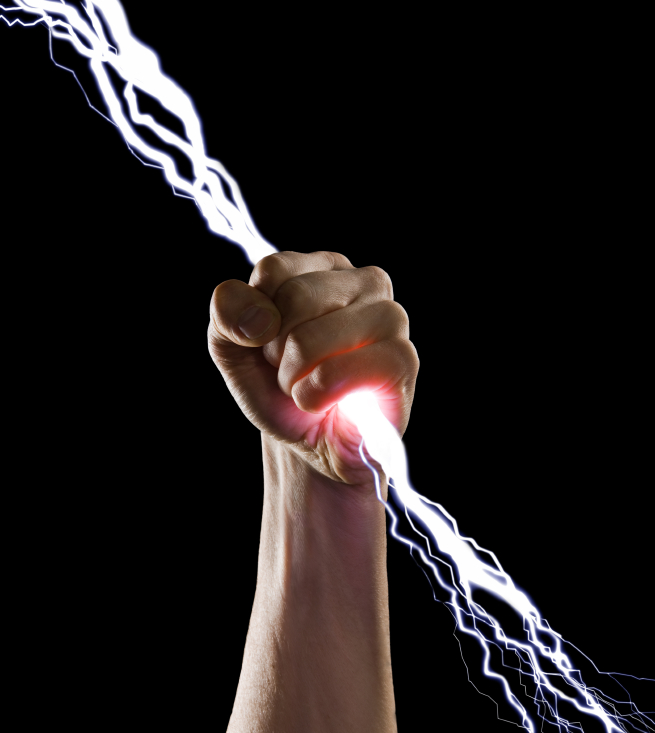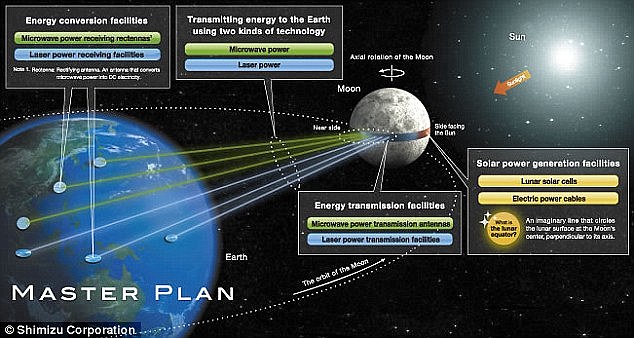
Electricity, power, juice; no matter what term you use, it’s one of the most iconic inventions ever discovered. It pushes, pulls, turns and excites our entire world. It is one of the most integrated technologies on this planet. Producing enough of it has become a challenge, considering the fact that inhabitants of our world use around 15 terawatts of power each year.
Unfortunately, I can’t even break down what ONE terawatt is, not in a way that most people can wrap their minds around anyway. Suffice to say, it’s more streetlights than your imagination could ever comprehend. Getting electricity from point A to point B is another Herculean task. Anyone care to guess at how many miles of electricity transmission lines are in existence? The United States alone has around 450,000 miles (725,000 Km) of high voltage lines alone. That does not count the low voltage lines that run from the street into homes and apartments. What if we could send electricity through the air wirelessly? Without going into a crazy amount of detail here, Nicola Tesla not only thought about it, but that proved it could be done some 100 years ago.
From the largest cities to the smallest towns in existence, everyone could have free power collected from the earth’s own magnetism and distributed by a giant network of facilities. I wonder why no one has ever pursued it…? Oh… maybe because there was no money in “free” energy. Since Tesla’s experiments and patents of the early 1900’s, the concept of being able to send electricity through the air wirelessly has been on the minds of scientists. If only Tesla could be here in 2015, with so many materials and methods of production available now.
Finally, after over 100 years of waiting, a handful of Scientists at JAXA (Japan Aerospace Exploration Agency) have recently figured out a way to do it, as part of an energy project called the Space Solar Power Systems (SSPS). SSPS is a project that collects sunlight from a facility in geostationary orbit above the planet, converts it to electromagnetic radiation in the form of either microwaves or lasers, transmits this energy 36,000 Km (22,000 mi) to a ground or ocean-based substation and distributes it from there. Aside from the almost limitless amount of energy available, there would be no emission of greenhouse gases or pollutants of any kind… within our atmosphere.
Unfortunately, given the current limitations of our technology, it will not be practical until the mid 2030’s according JAXA researcher and spokesman Yasuyuki Fukumuro.  The Shimizu Corporation, a major Japanese construction company, announced back in 2011 that it had plans in the works to send robots to the moon to mine ore, then construct and operate a massive solar array that would stretch around the entire diameter of the moon. It would thereby create a continuous supply of solar energy to beam back to the earth.
The Shimizu Corporation, a major Japanese construction company, announced back in 2011 that it had plans in the works to send robots to the moon to mine ore, then construct and operate a massive solar array that would stretch around the entire diameter of the moon. It would thereby create a continuous supply of solar energy to beam back to the earth.
So, where are we at right now? Following years of theoretical research, the scientists at JAXA, in cooperation with Mitsubishi, were able to successfully transmit 1.8Kw of electricity 55 meters (180 ft) to a receiver. It’s not quite the 22,000 miles needed, but it’s a fantastic start! For the everyday man, 1800 watts is a heavy duty coffee pot and a few lights, maybe a high-end hairdryer, give or take a few watts. The fact that it was done wireless is a huge leap into the future of solving our energy woes.
There are still large hurdles to cross though. The matter of getting larger machinery into space, and then maintaining it, hasn’t been overcome yet. Thinking of the tidal wave of advancements in 3D printing, all they need to do is build a giant 3D printer, put it into geostationary orbit and send raw materials to it. Build what you need on-site, like so many construction companies do. Does this still seem like a far-fetched science fiction movie?
Time will reveal all, for this and other schemes. I want to ask the one question I haven’t seen anywhere yet; WHAT is going to be the effect on our atmosphere, when it has concentrated beams of microwave energy being pushed through it? Any thoughts, theories or scientific guesses?
Tech Anon
Top 9 Things You Didn’t Know About America’s Power Grid. Retrieved 25 March 2015, from ).
Yasuyuki Fukumuro, Practical Application of Space-Based Solar Power Generation. (n.d.). Retrieved 25 March 2015, from reuters, & fassbender, ina. (2015, March 12).
Wireless electricity: Scientists send energy 55 meters away through air. / Zolfagharifard, E. (2015, March 13).
Japan comes closer to beaming solar power from SPACE.





lets just put it this way, we use about 15000 times more electricity than what is needed to power a DeLorean time machine
The DeLorean time machine… That was from a movie, right?
Guess we need to bring back the shuttle program or something similar. But I can say this it ain’t gonna be free. As for poking a hole in the ozone from such a concentrated beam it would depend on the frequency of the beam (like UV).
ok this is an awesome idea minus the green house gases being produced. just because they arent in our atmosphere doesnt mean that they arent dentrimental. next thing. what the fuck happened to those two russian scientists that were continuing nicola tesla’s work?
It will change weather patterns!
Well, they already do that with H.a.a.r.p.
https://www.youtube.com/watch?v=hNahvVa_fSI
https://www.youtube.com/watch?v=YFBM0kNMoJE
Who would ever think this is a good idea and will not be used as a weapon?
THEY SHOULD NEVER BUILD THIS
This is one of many articles I’ve read lately talking about a supressed technology (this one from tesla) and speaking as though it is something new. Not new, just withheld from the puplic.
Looks like the Death Star.
Holy shit. Ok, the idea is use photons emitted by the sun to generate electricity to convert back into photons to aim at the earth to convert back to electricity.
There is so much technology hidden from the general public. I have seen a car motor run on magnets for 17 years now but it can’ t be manufactured because the oil companies won’t allow it. No money in it fir them :=(